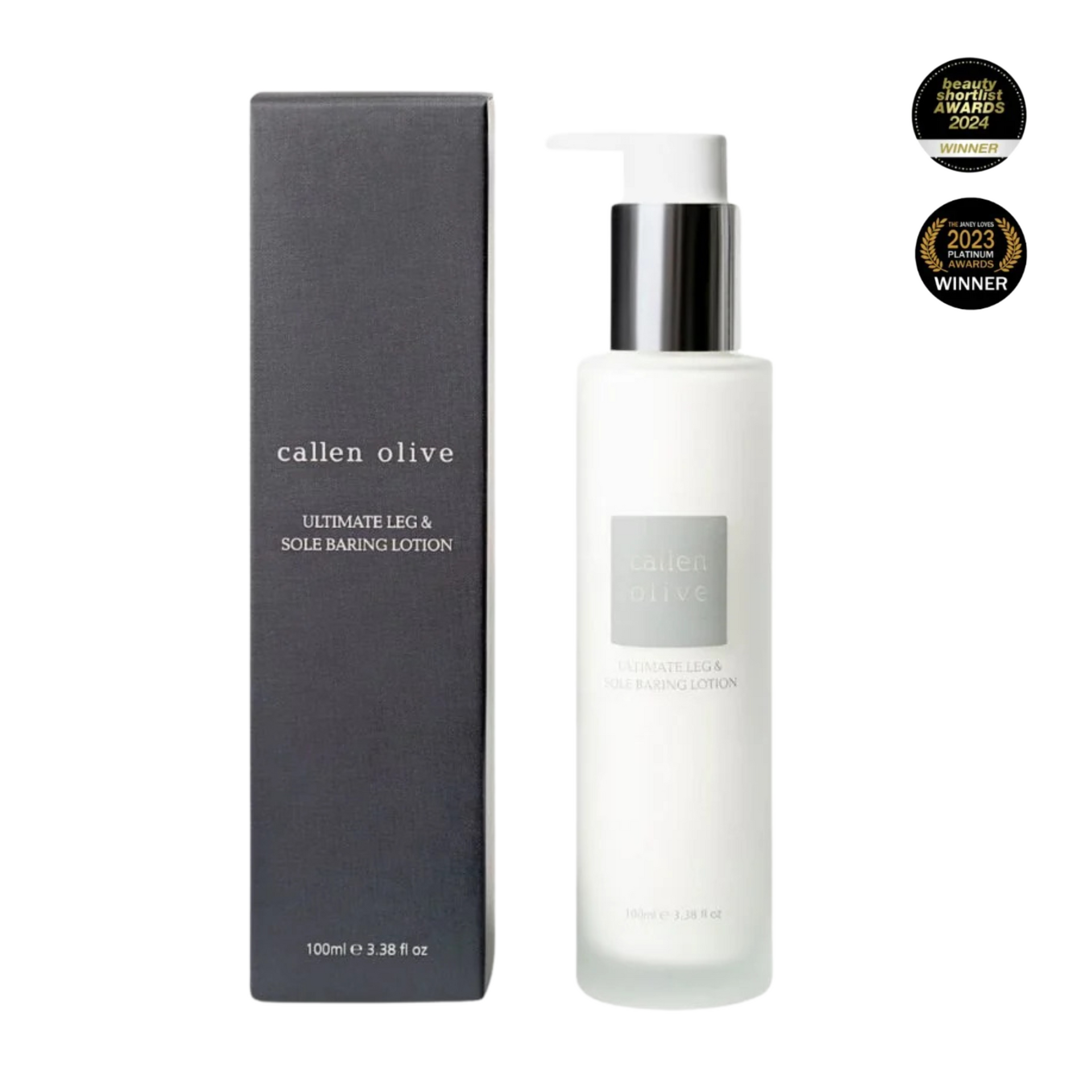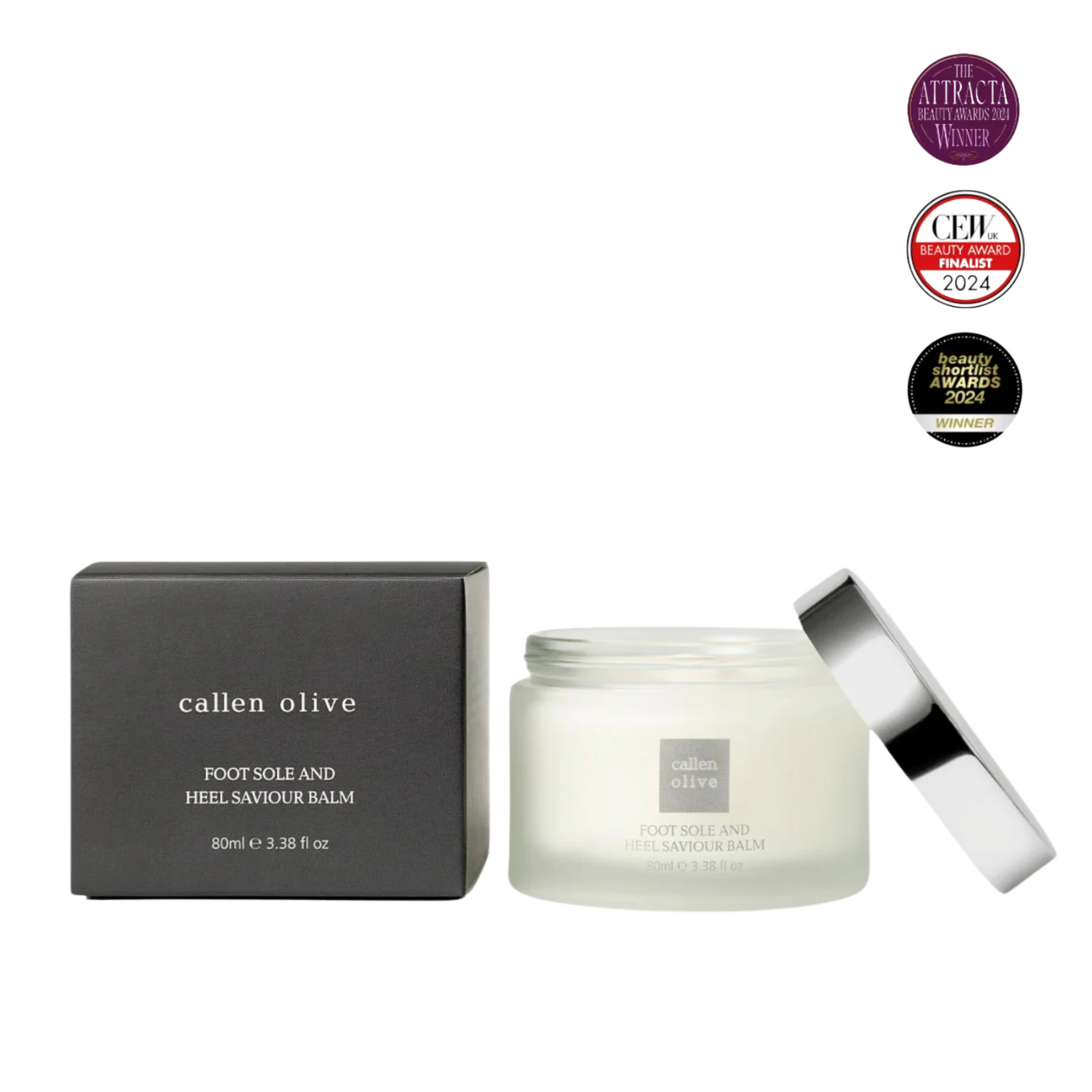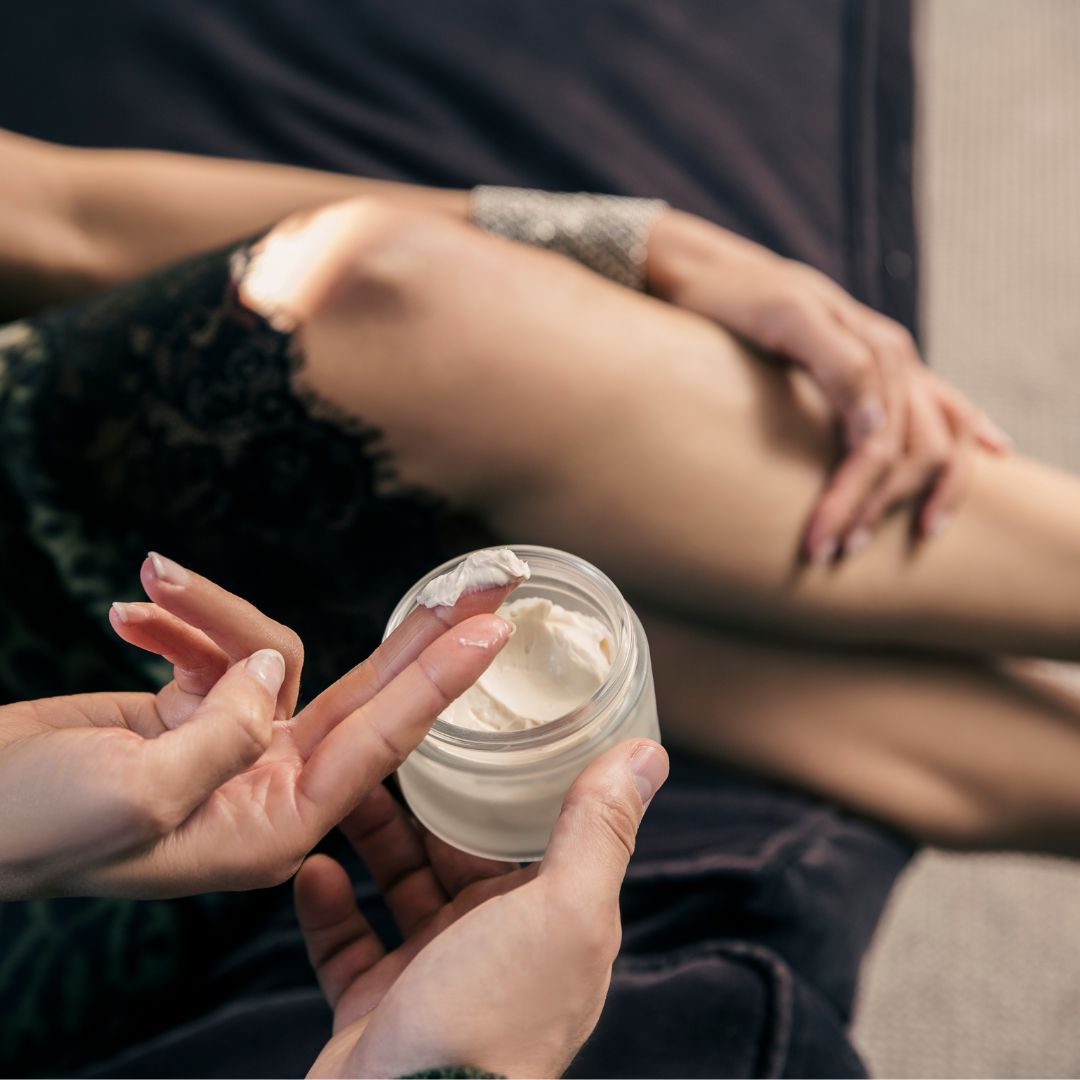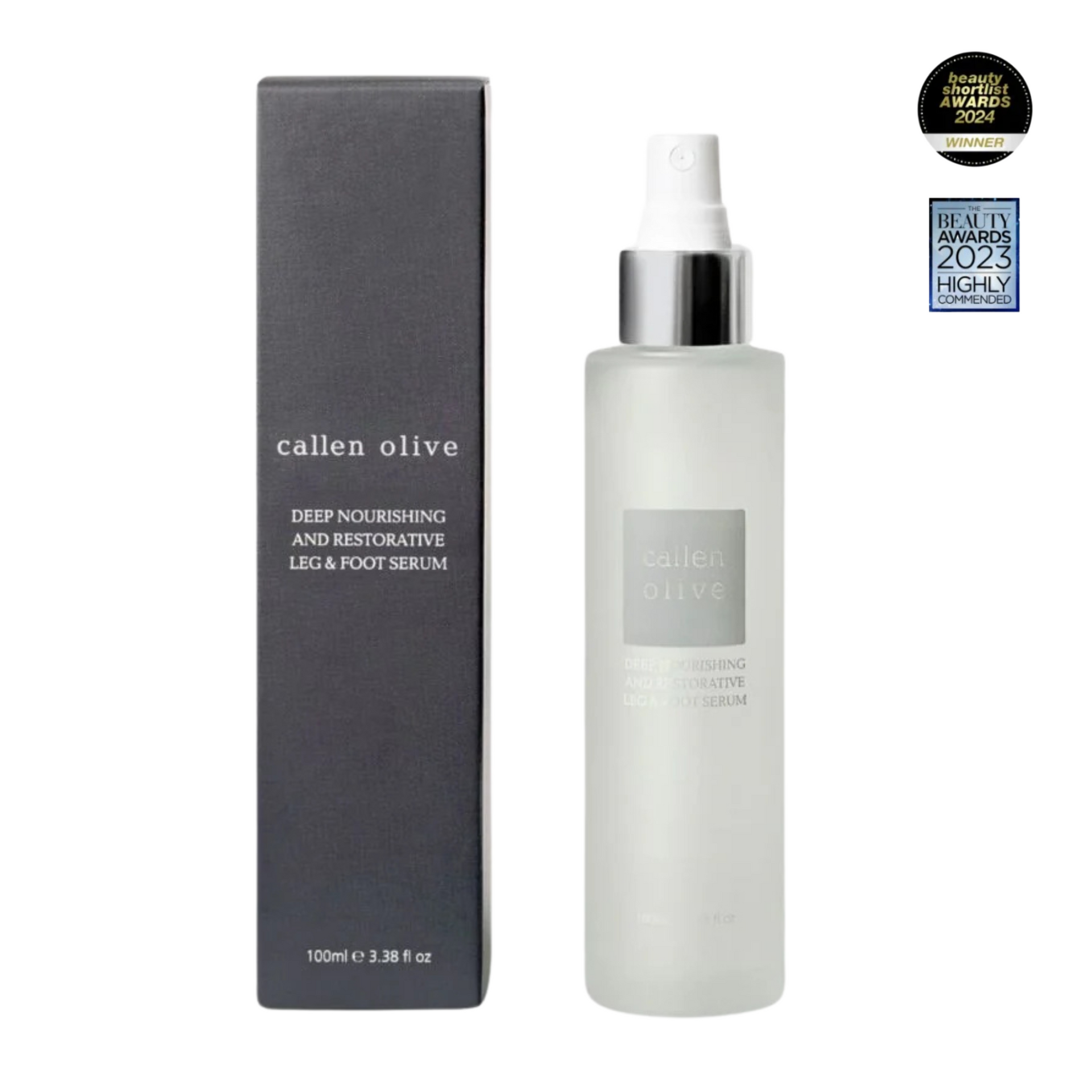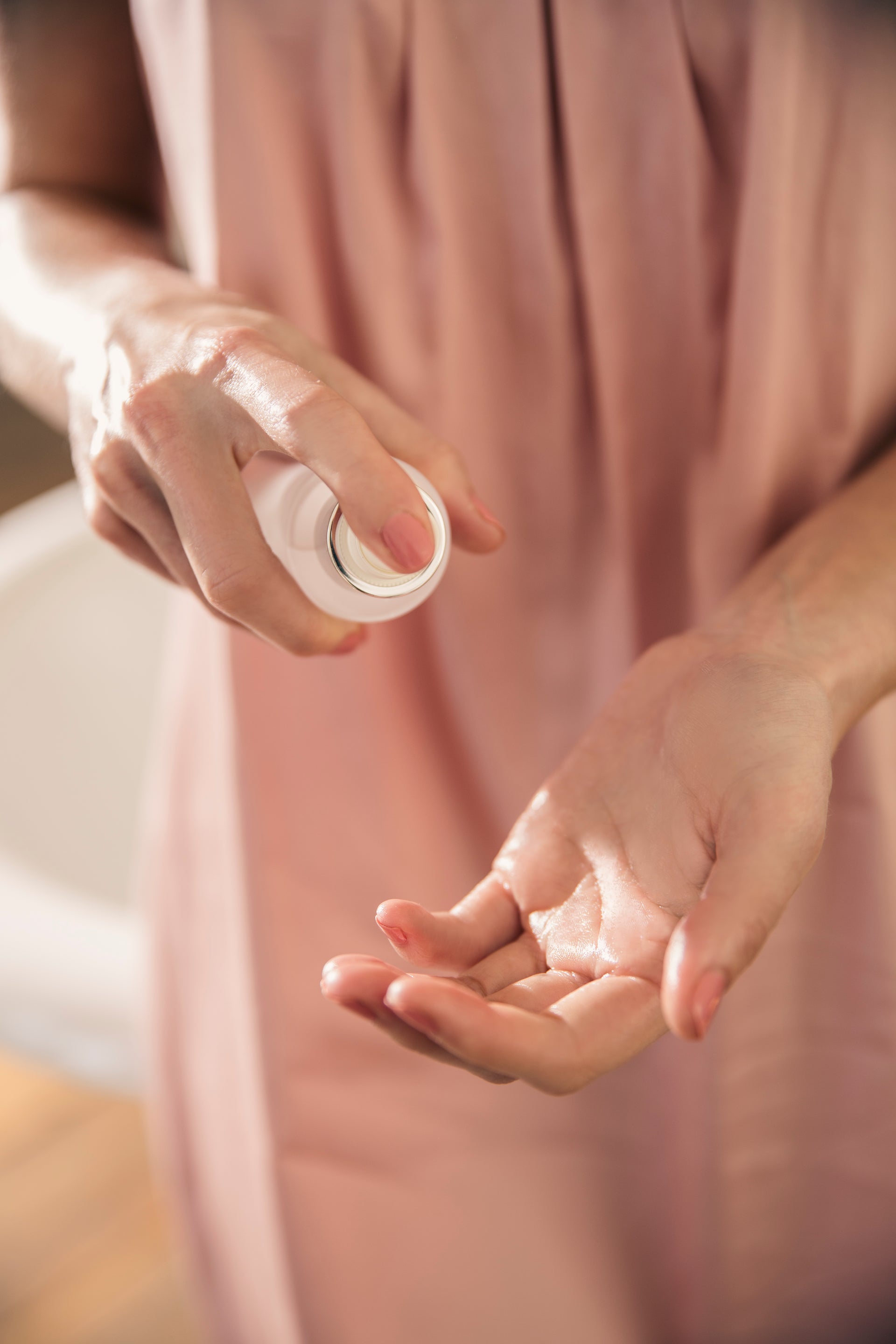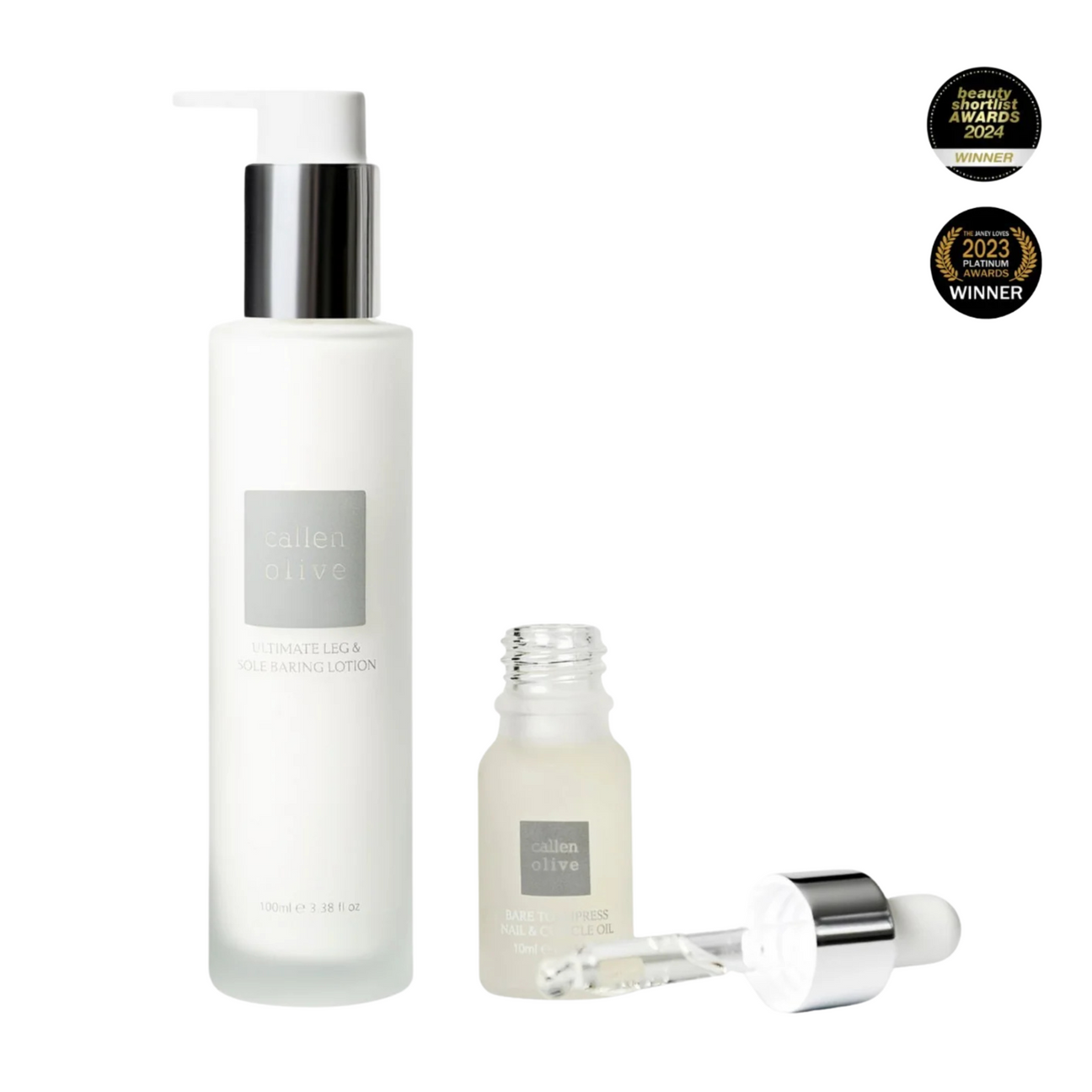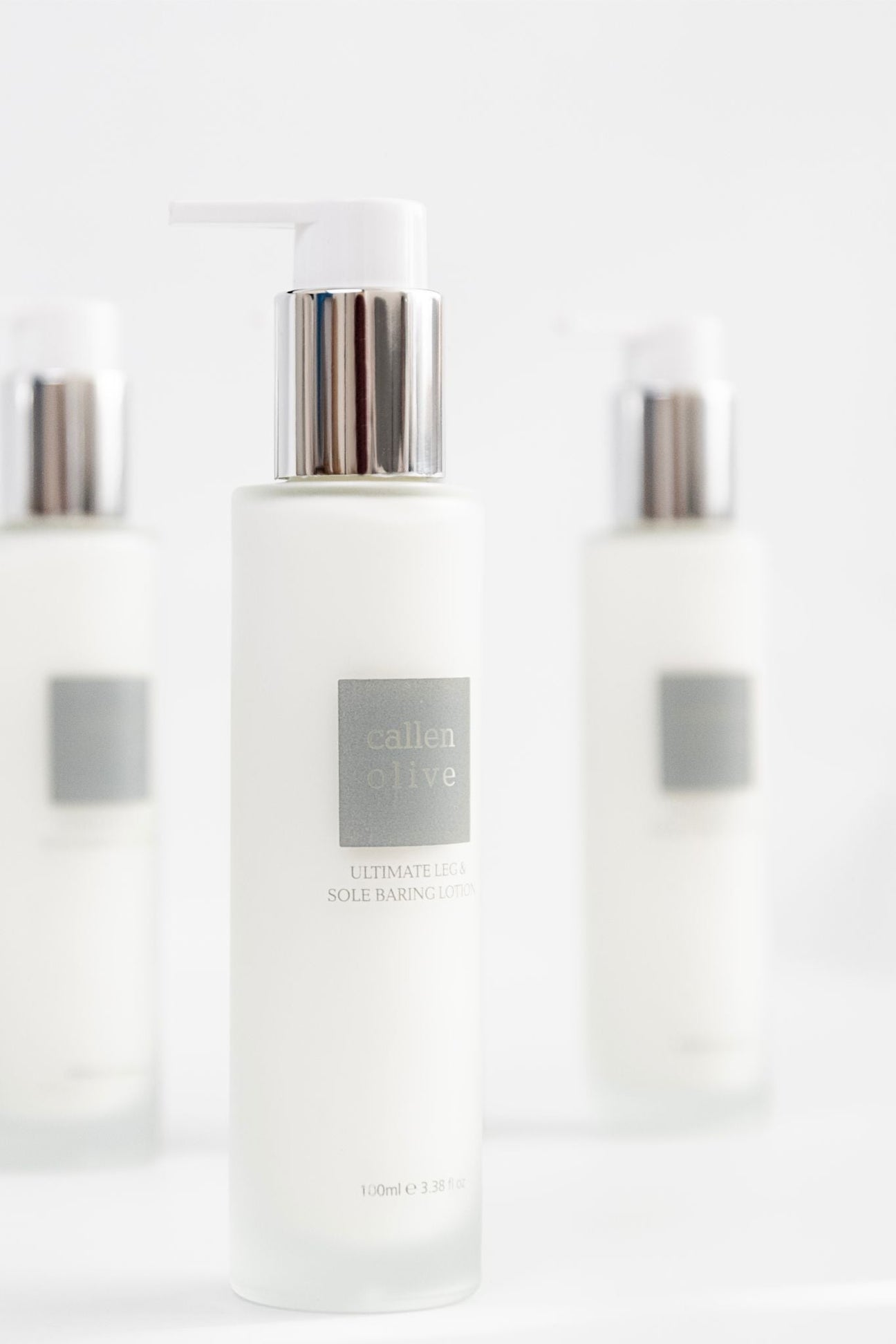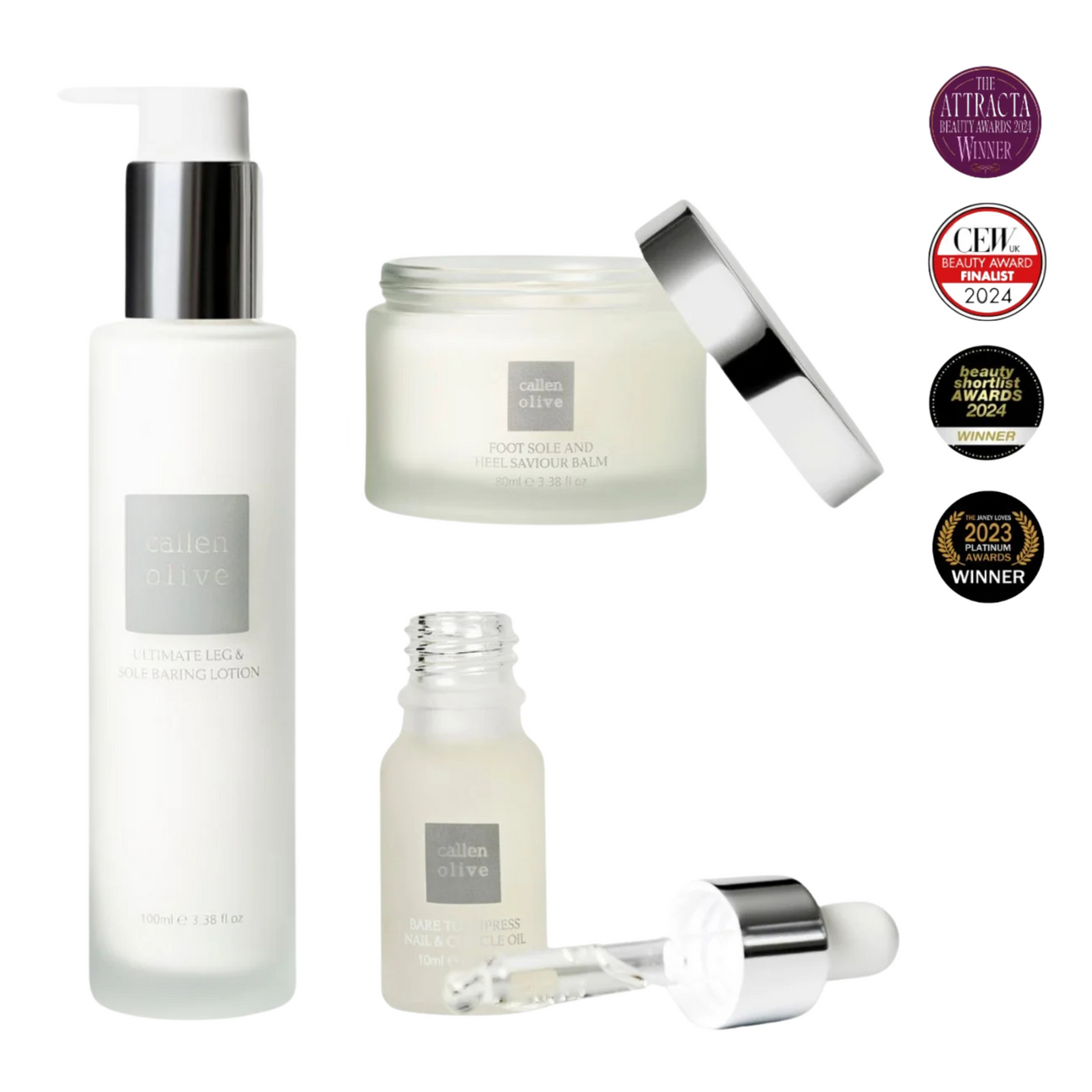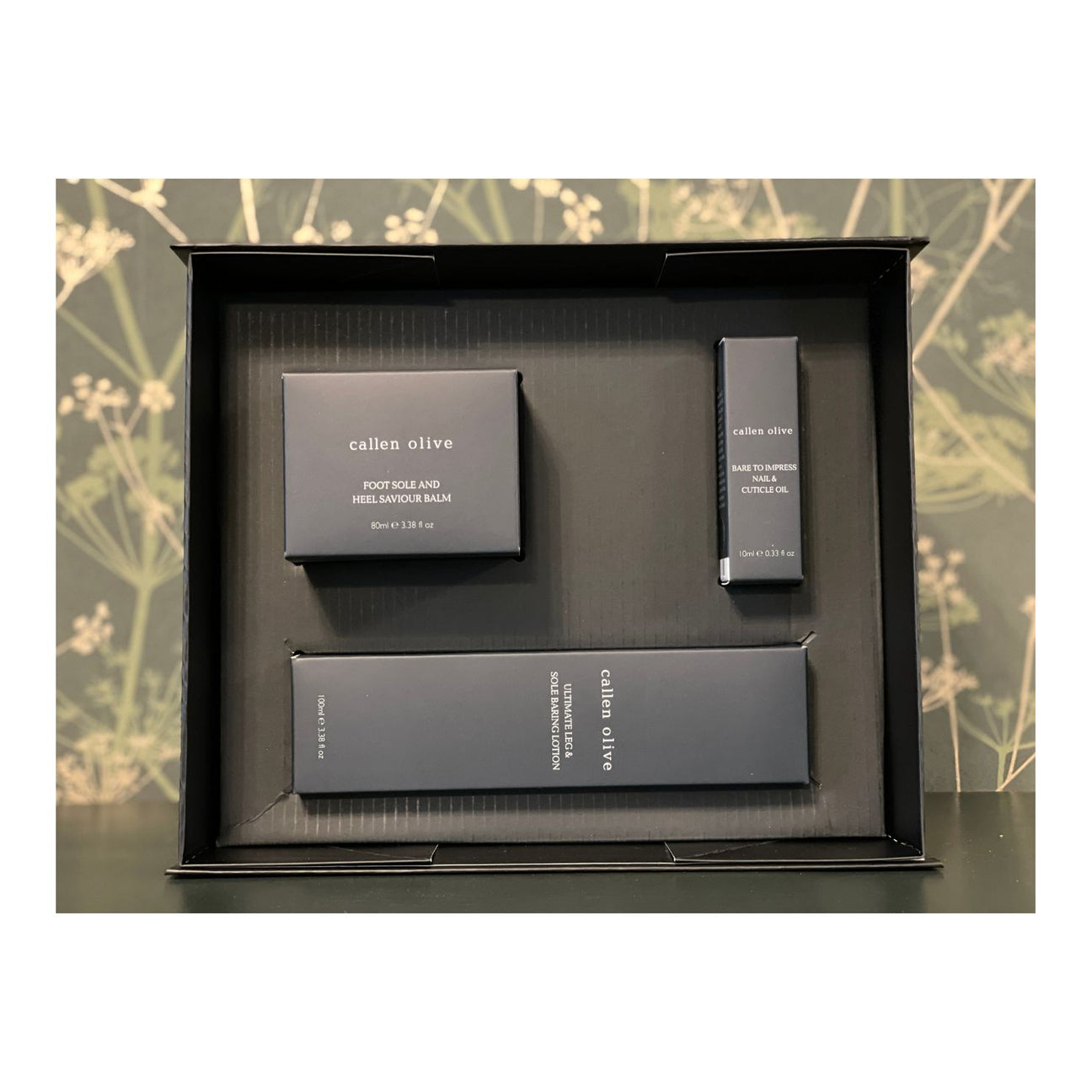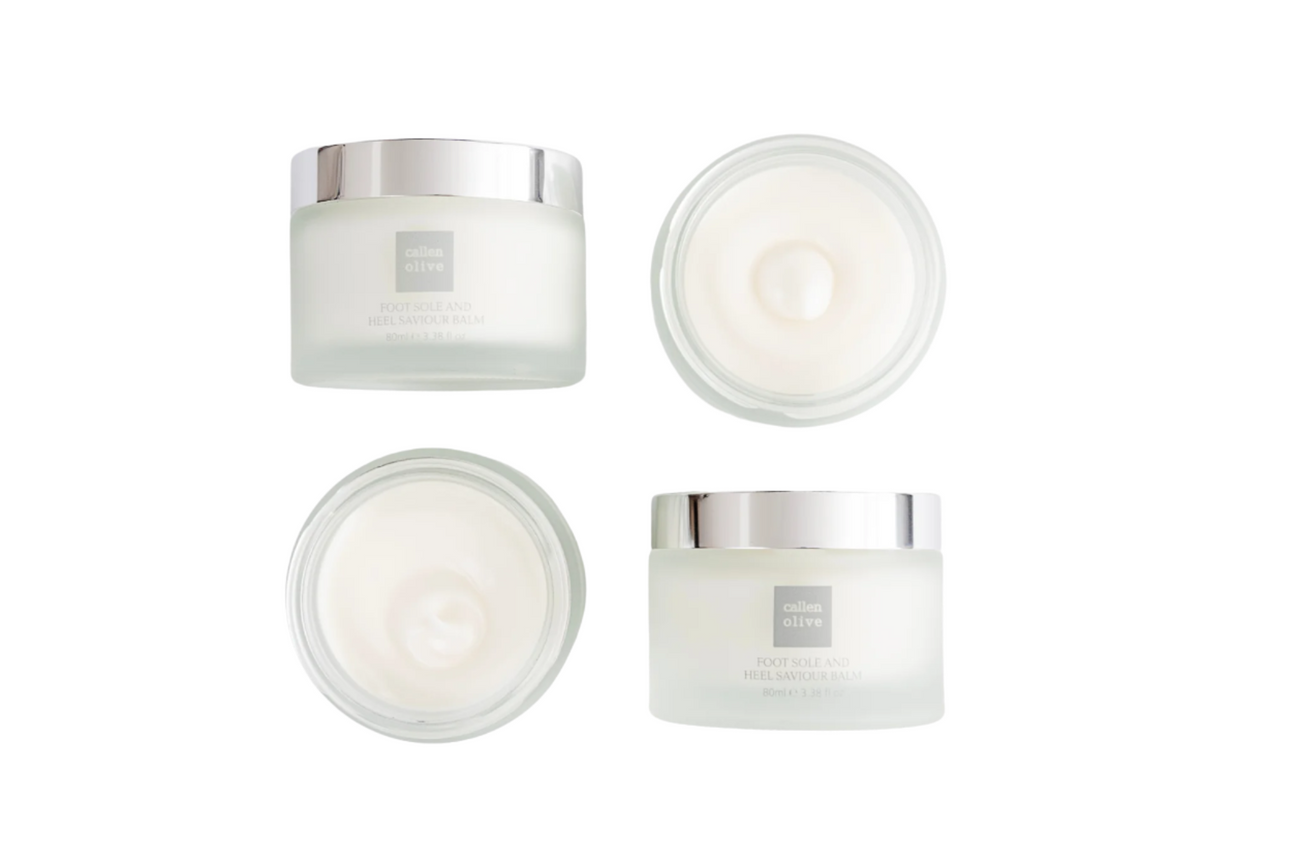If your fake tan is not taking well to your legs and feet, do not despair. Legs happen to be one of the most problematic areas to tan — whether that’s naturally or using your favourite fake-tan lotion. The secret to achieving a beautiful, streak-free self-tan on your legs and feet is in prepping the skin.
As well as taking longer to tan in the sun, your legs can be tricky to self tan too. That’s because the skin on your legs produces less melanin than the rest of the body and it’s thicker, harder and more challenging for the UV rays to penetrate. When using fake tan, you may find that the area below your knees is frequently paler than the rest of your body, after applying the same or more amount of product. Your feet, on the other hand, can come up considerably darker and patchy in areas. Therefore, when it comes to self-tanning your legs and feet, some extra care and attention can go a long way.
To ensure a flawless and long-lasting result, it's crucial to prepare your skin properly beforehand. In this blog post, I share with you my most effective tips and techniques to prep your legs and feet's skin for a beautiful, streak-free self-tan.
Tips for the legs
Use a good scrub
The first step in preparing your legs and feet for self-tanning is to exfoliate. Exfoliation helps remove dead skin cells, ensuring an even application and preventing patchiness. Before hopping into the shower, use a gentle scrub or exfoliating mitt to gently massage your legs and feet in circular motions. Pay special attention to areas prone to dryness, such as knees, ankles, heels, and the tops of the toes. This step will leave your skin smooth, soft, and ready to absorb the self-tanner.
Shave or wax
For the smoothest application, it's essential to remove any unwanted hair before self-tanning. If you opt for shaving, make sure to do it at least a day before self-tanning to allow the skin to recover. For waxing, you should have the hair removed a few days in advance, as self-tanner can potentially irritate freshly waxed skin.
Moisturise dry areas
Dry areas like knees, ankles, heels, and the tops of the feet tend to absorb more self-tanner, resulting in darker patches. To prevent them from looking unnaturally tanned, apply a lightweight, oil-free moisturiser to these areas before self-tanning. The moisturiser acts as a barrier, creating a more even surface and reducing the likelihood of uneven coloration. Callen Olive Ultimate Leg & Sole Baring Lotion with Apricot Oil, Shea Nut Butter and Vitamin E has moisture-locking properties to help the skin hydrate naturally and strengthen its barrier protection, visibly restoring a smooth and healthy texture.
Choose the right self-tanner
Selecting the right self-tanner is crucial for achieving natural-looking results. Consider your skin tone and desired tan intensity when choosing a self-tanning lotion. Opt for a self-tanner specifically designed for the body, as they often have a different formulation than those for the face. You can choose between lotions, mousses, or sprays, depending on your preference and the finish you desire.
Apply with care, patience and precision
When applying self-tanner to your legs, it's essential to work in sections. Start from the ankles and work your way up to the thighs, using long, sweeping motions. Use a tanning mitt or a latex glove to ensure an even application and to protect your hands from staining. Pay attention to blending around the knees and ankles for a seamless finish. Take your time and work methodically to achieve a professional-looking tan.
Tips for the feet
Exfoliate Your Feet
Use a foot scrub or a foot file to gently remove dead skin cells and smooth any rough patches on your feet. Pay attention to areas like the heels, sides of the feet, and the tops of the toes. This step helps create an even surface and prevents the self-tanner from clinging to dry areas.
Apply a barrier cream
Apply a thin layer of lotion/cream around the areas of your feet that tend to accumulate self-tanner, such as the sides of the feet, ankles, and toes. This creates a protective barrier and ensures a more even application.
Use a tanning mitt or latex glove
When tanning your feet, wear a tanning mitt or latex glove to achieve a streak-free result. Apply a small amount of self-tanner to the mitt or glove and blend it onto your feet using circular motions. Ensure that you cover all areas, including the tops, sides, and in-between the toes. Take your time and work carefully to achieve an even and natural-looking tan.
Blend the ankles
Pay special attention to blending the self-tanner carefully around the ankles, making sure to feather the colour onto the top of the foot. Use gentle, sweeping motions and take your time to ensure a seamless transition between your feet and legs.
Finally, make sure you allow the recommended drying time for both legs and feet. Plus, if you want to extend the life of your tan, you should avoid exfoliating or using harsh soaps on your legs and feet, as this can strip away the self-tanner. When showering, opt for lukewarm water instead of hot water, as hot water can accelerate the fading process
Most importantly, make sure you moisturise daily as hydrated skin retains the colour better and prevents premature fading.
Callen Olive products contain up to 99% of plant-based, highly potent oils and vitamins to help you maintain your skin beautifully hydrated 24/7. To shop the collection, click here.



